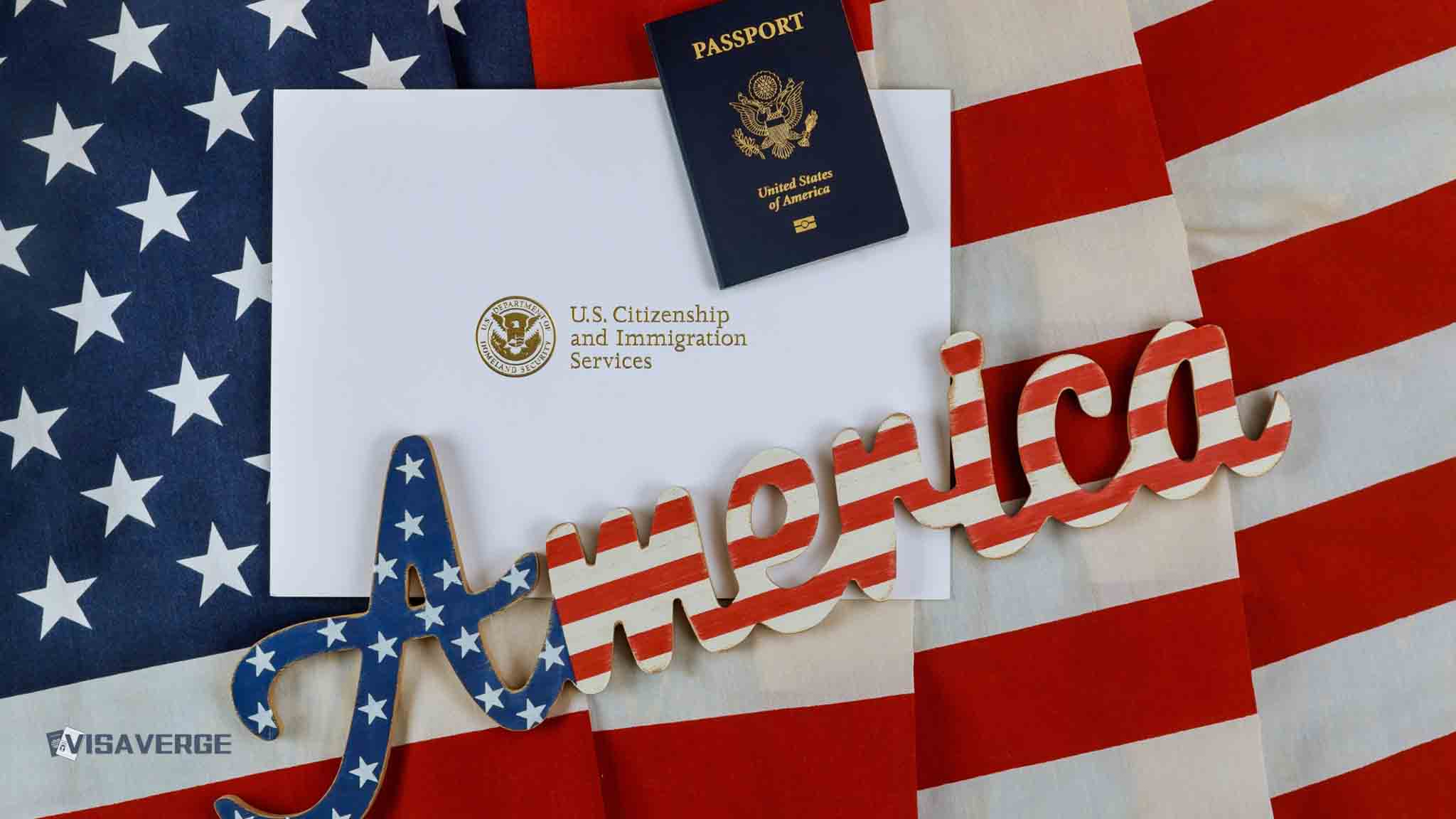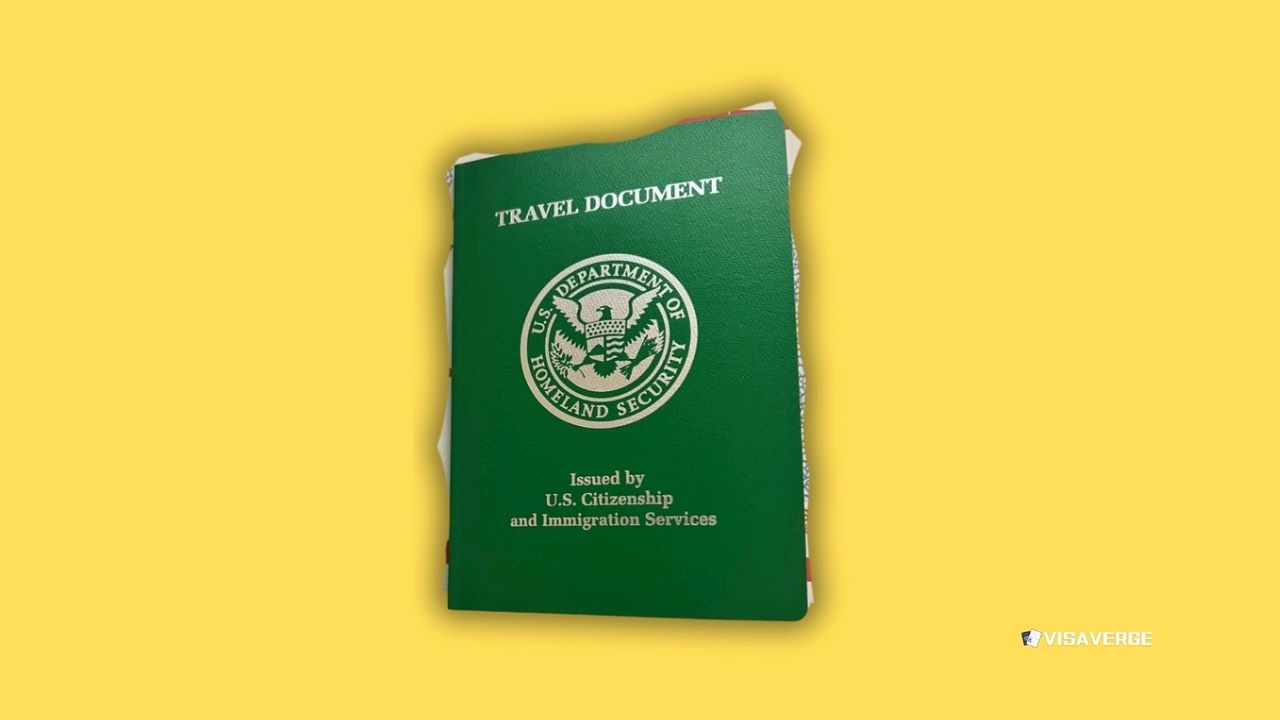Workers on H-1B visas are asking whether time spent abroad risks losing their status. Under current United States 🇺🇸 rules, an approved H-1B petition is not considered abandoned simply because the worker is outside the country, even for long periods. The key risk point is different: when a worker has a pending Change of Status request and travels before approval. In that case, USCIS treats the Change of Status (COS) as abandoned, though the underlying H-1B petition can still be approved. This split outcome forces consular visa processing before the person can return and start work in H-1B status.
Policy guidance on travel and abandonment

For students and other nonimmigrants moving to H-1B, employers often file Form I-129 with a Change of Status request. If the person leaves the U.S. before USCIS approves that COS, the COS is abandoned. The petition itself may proceed to approval, but entry in H-1B status then requires a visa appointment at a U.S. consulate abroad.
Travelers in this situation should expect to complete consular processing and, on return, present a valid H-1B visa and approval notice at the port of entry. VisaVerge.com reports that this surprise catches many F-1 students who accept job offers and travel home while their COS is pending, only to learn that their domestic “start in H-1B” plan no longer applies.
By contrast, people already in H-1B status can depart and remain abroad without H-1B petition abandonment, provided:
– The petition validity continues; and
– The job remains available.
On return, they must hold a valid H-1B visa stamp or obtain a new one at a consulate if the visa expired while abroad. Remember: the petition is employer-specific; if an employer withdraws the petition while the worker is outside the U.S., reentry on that approval is not possible.
Travel gets more complex during pending H-1B extensions or amendments. While travel is not barred, it is risky. Reentry will require:
– a valid H-1B visa stamp, and
– the correct approval notice covering the job and location.
If the prior employer withdrew the earlier approval, the traveler cannot rely on that older approval to come back. Many companies advise delaying non‑essential travel until the extension or amendment is approved to avoid airport complications.
USCIS can also find abandonment when applicants fail to respond to agency notices, skip biometrics, or miss scheduled interviews tied to COS or Adjustment of Status filings. These process misses can end the benefit request, even without travel.
Tip: Applicants who set up USCIS online accounts and opt in for text and email alerts reduce the chance of a missed deadline that could derail a pending case (VisaVerge.com analysis).
Another frequent pain point arises when H-1B employment ends. If an employer terminates the job and no other status or qualifying application is in place, the worker falls out of status and must depart. Workers in that position often pivot to:
– a new employer’s H-1B petition, or
– another nonimmigrant status.
But until a new filing is properly in process, H-1B status is lost. That reality also affects reentry planning for anyone outside the U.S. following job loss; a withdrawn petition means the visa tied to it can no longer be used.
Practical effects for workers and employers
The bottom line for travel is straightforward but strict: If you leave the U.S. while a Change of Status to H-1B is pending, your COS is abandoned. You can still pursue the job, but you’ll need to get an H-1B visa abroad and enter to activate H-1B classification. If you’re already in H-1B status, you can remain abroad without jeopardizing the H-1B petition, provided you keep valid paperwork to return.
Employers should plan assignments and start dates with these rules in mind, especially around the fall start period for cap-subject cases.
Common scenarios
- Pending F-1 to H-1B COS, travel before approval:
- COS abandoned
- Petition may be approved
- Must obtain H-1B visa at a consulate to reenter in H-1B status
- Already in H-1B status, travel abroad:
- No abandonment of the H-1B petition
- Return requires a valid H-1B visa and approval notice
- Pending H-1B extension or amendment, travel abroad:
- Allowed but not advised
- Traveler needs the right approval notice and valid visa
- A withdrawn prior petition blocks reentry
- Missed USCIS notice, biometrics, or interview for COS/AOS:
- Application can be deemed abandoned, ending that request
- Employment terminated:
- H-1B status ends unless another status or protective filing exists
- Departure is expected if no other lawful basis remains
Risk-reduction steps for workers and HR teams
- Avoid travel until a Change of Status is approved.
- Keep copies of the current H-1B approval notice and job letter for return travel.
- Confirm the visa stamp is valid for the planned return date; if not, book a consular appointment early.
- Track USCIS notices and deadlines; respond on time to prevent abandonment findings.
- Verify whether a prior petition remains active before boarding a flight back to the U.S.
USCIS describes H-1B requirements and employer filings on its official H-1B page, which remains the best starting point for primary rules and updates. Readers can review the agency’s H-1B overview at the USCIS website: USCIS H-1B Specialty Occupations. Employers file H-1B petitions on Form I-129, available here: USCIS Form I-129, Petition for a Nonimmigrant Worker.
Consular processing and family impact
Because consular processing becomes mandatory when a COS is abandoned, planning for visa appointments matters. Appointment wait times vary by consulate and season. Travelers should:
– check local consulate scheduling;
– expect to bring the H-1B approval notice, job letter, and proof of qualifications; and
– note that if the worker changed employers while outside the U.S., only the current employer’s approved petition supports the visa.
The real-world impact is often felt by families. A spouse who planned to keep working in the U.S. may need to pause those plans if the principal worker must secure a visa abroad. Children on school schedules can be affected by delays in consular appointments. Employers face onboarding gaps and project disruptions.
That’s why travel timing, petition strategy, and document readiness are now core parts of H-1B workforce planning.
Other practical notes
- Long trips do not “reset” the H-1B clock or cause abandonment by themselves: time abroad does not abandon an approved H-1B petition, nor does it change petition validity dates.
- Workers should coordinate with counsel on recapturing time abroad in future extensions and ensure employment continues so the H-1B classification remains meaningful on return.
Policy takeaway: The H-1B framework draws a bright line at travel during pending Change of Status filings. Cross that line, and the COS is abandoned, pushing the case into consular processing. Stay on the approved side of the line, and long absences do not, on their own, end an H-1B petition. In a tight hiring market, getting that distinction right can save months—and jobs.
Frequently Asked Questions
This Article in a Nutshell
USCIS rules distinguish between an approved H-1B petition and a pending Change of Status (COS). An approved petition is not abandoned by time spent abroad so long as the petition validity continues and the job remains available. However, if a worker departs the U.S. while a COS is pending, USCIS treats the COS as abandoned; the petition itself may still be approved, but the individual must obtain an H-1B visa at a U.S. consulate and enter with that visa to activate H-1B status. Travel during pending extensions or amendments is allowed but risky: reentry requires a valid H-1B visa and the correct approval notice, and a withdrawn prior petition blocks return. Workers and employers should avoid nonessential travel while COS or critical filings are pending, keep USCIS notifications current, retain approval notices and job letters for travel, and coordinate consular appointments early to minimize delays and family or employer disruption.












